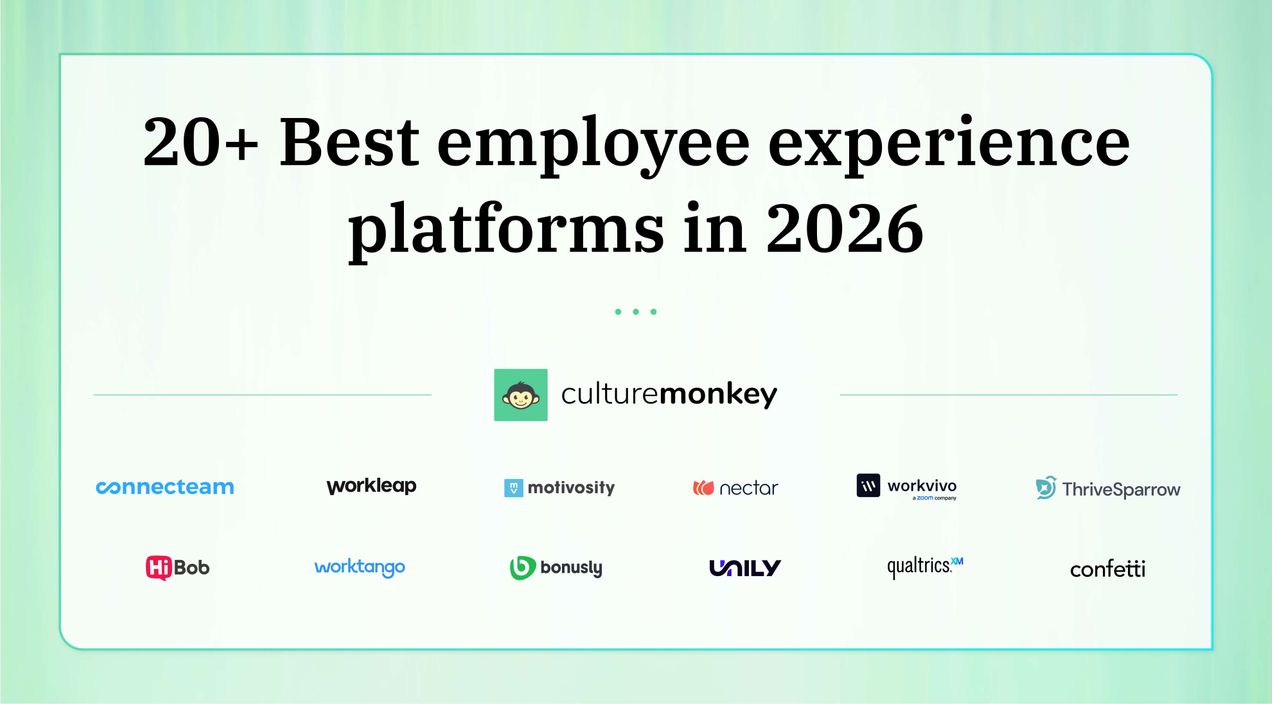What is VTO (Voluntary time off): Best practices for creating a killer VTO policy at work

Picture this: A café in a beach town is packed all summer, with baristas making lattes at lightning speed. But when winter rolls in, foot traffic slows, and employees spend their shifts wiping already-clean counters.
Instead of cutting hours unpredictably or laying off staff, the owner offers Voluntary Time Off (VTO)—allowing employees to take unpaid leave while ensuring they still have jobs when business picks up again.
In a corporate setting, VTO means giving employees the option to step away during slow periods or when they need personal time, without losing their job security. For businesses, it’s a way to reduce payroll costs while maintaining workforce flexibility. But how does VTO actually work, and why are more companies adopting it? Let’s dive in.
What is VTO in the workplace? How does it work?

Voluntary time off (VTO) In the workplace is a policy that allows employees to take unpaid leave when they choose, typically during periods of low workload or when they have personal matters to attend to. It provides flexibility for employees to manage their personal and professional lives without using their Paid Time Off (PTO) Or vacation days.
How does VTO work?
- Eligibility: Employers outline which employees are eligible for VTO, often including factors like job role, tenure, and current workload.
- Request process: Employees must follow a defined process to request VTO, which usually involves notifying their manager or HR department in advance. The request is then reviewed to approve VTO requests based on business needs and staffing levels.
- Approval: Approval is contingent upon ensuring that the employee’s absence won’t negatively impact operations. Managers consider factors like project deadlines, team capacity, and client commitments.
- Unpaid leave: Once approved, the employee can take the designated time off without pay. During this period, their benefits and employment status typically remain unchanged.
- Job security: A well-crafted VTO policy ensures that taking voluntary time off doesn’t affect the employee’s job security or career progression.
Types of VTO (Voluntary Time Off)
A well-structured VTO policy offers different types of voluntary time-off (VTO) options to meet employee needs while maintaining business efficiency. Here are key types of VTO that organizations can implement:
- Seasonal VTO: Many companies, especially in retail and logistics, offer voluntary time-off VTO during slow seasons. This helps balance labor costs while giving employees flexibility.
- Partial-Day VTO: Employees can take a few hours off instead of a full day, ensuring they meet personal commitments without using PTO. This type of volunteer time off policy promotes work-life balance.
- Project-Based VTO: Offered when certain projects experience downtime, allowing employees to take unpaid leave. This VTO policy helps optimize workforce management during non-peak periods.
- Volunteer VTO: A growing trend in CSR-focused companies, this type of volunteer time off policy enables employees to engage in community service. Many organizations provide volunteer time off policy examples to encourage participation.
- On-Demand VTO: Employees can request unpaid leave anytime, subject to business needs. What is VTO at work? It’s a flexible solution that helps employees manage personal responsibilities.
- Pre-Scheduled VTO: Companies proactively offer voluntary time-off during expected low-demand periods. Employees can opt-in to better align work schedules with personal needs.
- Emergency VTO: Designed for urgent personal situations, this option ensures employees can take immediate leave when necessary. Organizations should clearly define VTO to avoid misunderstandings.
What is the purpose of the Voluntary Time Off at work?

Voluntary Time Off (VTO) allows employees to take unpaid leave, offering flexibility while benefiting both workers and employers. Here’s why it matters:
- Provides work-life balance: Employees can manage personal commitments or take a break without using paid leave.
- Reduces burnout: Taking time off without pressure improves well-being and job satisfaction.
- Helps control labor costs: Employers can cut payroll expenses during slow periods without resorting to layoffs.
- Maintains employee morale: Unlike mandatory unpaid leave, VTO is optional, keeping trust intact.
- Enhances employer reputation: Offering VTO shows a company’s commitment to flexibility and employee welfare.
- Attracts socially responsible talent: Employees who value corporate social responsibility are drawn to companies with VTO programs.
- Requires clear policies: Guidelines should cover eligibility, application processes, and potential impacts on benefits or seniority.
- Fosters a positive workplace culture: When managed effectively, VTO supports both financial stability and employee needs.
Benefits and drawbacks of voluntary time off

Let’s take a look at the advantages and disadvantages of VTO in the workplace.
- Cost savings for employers: During slow periods, VTO helps manage labor costs without resorting to layoffs, maintaining financial stability. Companies can reduce payroll expenses without the need for drastic measures, preserving resources for busier times.
- Increased employee flexibility: Employees can address personal needs, and emergencies, or pursue personal interests without using paid leave, enhancing work-life balance. This flexibility allows employees to take care of personal matters without feeling stressed about exhausting their PTO.
- Improved employee morale: Providing the option for VTO shows trust and support, boosting employee satisfaction and loyalty. Employees appreciate having the autonomy to manage their time, which can lead to higher engagement and productivity.
- Operational efficiency: By offering VTO during low-demand periods, companies can align workforce levels with business needs, maintaining operational efficiency. 83% of executives believe VTO can help employees be purpose-driven. This proactive approach helps in adjusting staffing levels without impacting the quality of service or product delivery.
- Retention and recruitment: A flexible VTO policy can be an attractive benefit, helping to retain current employees and attract new talent. Prospective employees may view VTO as a valuable perk, giving the company a competitive edge in the job market.
- Support for community organizations: Allowing employees to volunteer at approved charitable or community organizations without impacting their wages enhances corporate social responsibility. This support benefits local communities and provides a sense of fulfillment for employees, ultimately benefiting both the employees and the company.
Drawbacks
- Potential for abuse: Without clear guidelines, some employees might misuse VTO, leading to staffing issues and reduced productivity. Establishing strict policies and monitoring can mitigate this risk but requires additional oversight.
- Operational disruptions: If too many employees take VTO simultaneously, it can strain the remaining workforce and disrupt business operations. Ensuring that VTO is well-managed and staggered can help maintain continuity.
- Unequal access: Not all roles or departments may be able to accommodate VTO, potentially leading to perceptions of unfairness or favoritism. Transparent communication and equitable policies are essential to address this issue.
- Impact on team dynamics: Frequent or extended absences can affect team cohesion, collaboration, and project continuity. Teams may struggle with coordination and maintaining momentum on projects.
- Administrative burden: Managing VTO requests and ensuring adequate staffing levels can add to the administrative workload for HR and managers. Effective planning and streamlined processes can help manage this additional burden.
Common misconceptions about VTO
Voluntary Time Off (VTO) is often misunderstood, leading to confusion among employees and employers alike. Clarifying these misconceptions ensures a better understanding of how VTO policies work and their impact on the workplace.
- VTO means employees can take time off anytime they want: Many assume VTO is an unrestricted benefit, but approvals are typically based on business needs. Employers ensure staffing levels remain sufficient before granting requests.
- VTO is the same as PTO: VTO and PTO are different. VTO is unpaid and used for managing workforce flexibility. Employees taking VTO do not receive their regular salary for those hours.
- Taking VTO can affect job security: Some fear that requesting voluntary time off might be viewed negatively by management. However, well-structured VTO policies ensure that participation does not impact career progression or job stability.
- VTO is only for hourly or warehouse employees: While companies like Amazon implement VTO in fulfillment centers, businesses across various industries offer voluntary time-off programs to support work-life balance.
- VTO can be used on training or critical workdays: Most VTO policies do not permit employees to take time off during essential training sessions or peak business periods to avoid disruptions.
- VTO is only beneficial for employers: While businesses manage labor costs with VTO, employees gain flexibility for personal commitments without using paid leave.
VTO vs PTO: What’s the difference?

Voluntary Time Off (VTO) and Paid Time Off (PTO) are two distinct types of leave policies offered by employers, each serving different purposes and having unique characteristics.
| Aspect | Voluntary time off (VTO) | Paid time off (PTO) |
|---|---|---|
| Type of leave | Unpaid leave | Paid leave |
| Purpose | Allows employees to take time off without pay for personal reasons | Provides paid time off for vacation, illness, or personal needs |
| Flexibility | Helps employees manage work-life balance without using paid leave | Employees can take time off without specifying a reason |
| Cost management | Helps employers reduce payroll costs during slow periods | No direct cost-saving benefits for employers |
| Impact on morale | Beneficial for employees who have exhausted PTO or want to save it for future use | Boosts employee satisfaction and retention by offering paid rest periods |
| Eligibility | Typically available to full-time employees, with some restrictions for part-time workers | Accrued based on tenure or hours worked, usually available to all employees |
Is voluntary time off the same as volunteer time off?
While Voluntary Time Off (VTO) and Volunteer Time Off (VTO) share similar terms, they have different purposes in workplace policies. Below is a breakdown of key aspects that distinguish them.
- Definition and Purpose: Voluntary time off allows employees to take unpaid leave when they need personal time or when business demand is low. Volunteer time off is paid leave that enables employees to participate in community service or nonprofit work while still receiving their salary.
- What does VTO mean in a workplace setting: Voluntary time off helps companies manage labor costs by reducing payroll expenses without layoffs. Volunteer time off strengthens corporate social responsibility (CSR) efforts, improving employer branding and engagement.
- How does VTO work: Voluntary time off is requested by employees and approved based on workload availability, ensuring business operations aren’t disrupted. Volunteer time off is typically pre-structured, with employees allocated a set number of paid hours for volunteering.
- VTO process and implementation: Voluntary time off policies vary, but they usually require employees to apply in advance and get managerial approval based on operational needs. Volunteer time off policies outline approved nonprofit activities, eligibility criteria, and guidelines for tracking participation.
What is a voluntary time off policy?

A Voluntary Time Off (VTO) policy allows employees to take unpaid leave voluntarily, providing flexibility for managing personal matters without using paid time off (PTO). This helps employees balance work and life, improving job satisfaction and well-being.
For employers, VTO is a strategic tool to manage labor costs during slow periods without resorting to layoffs, preserving morale and maintaining positive employee relationships. A structured VTO policy can also support volunteer programs, enhancing engagement and productivity.
To prevent misuse and ensure fairness, a well-structured policy should include clear eligibility criteria, a straightforward request and approval process, and guidelines to protect job security.
Effective communication is essential to ensure employees understand and feel comfortable using VTO. When properly implemented, a VTO policy enhances both employee satisfaction and organizational efficiency, creating a more adaptable and supportive workplace.
How to create a Voluntary Time Off policy: 7 Best practices to try in 2025

A well-structured VTO policy ensures that voluntary time off (VTO) benefits both employees and employers while maintaining productivity. Here’s how to define and implement an effective policy:
- Define clear eligibility criteria: Establish who qualifies for VTO (Voluntary Time Off) by considering factors like tenure, job role, and workload. Major companies like Amazon have VTO policies for warehouse employees, offering volunteer time off examples during periods of overstaffing.
- Outline a simple request process: Employees should easily understand what VTO means and how to request it. Provide a streamlined system through an HR portal or direct manager approval to simplify the process.
- Set approval guidelines: VTO vs. PTO differs in that VTO is unpaid and depends on business needs. Managers should evaluate requests based on deadlines, staffing levels, and operational requirements.
- Ensure no negative impact on job security: Clearly define VTO as an option that won’t affect career progression. Employees should feel confident that taking volunteer time off will not put their roles at risk.
- Promote a positive culture around VTO: Leadership should normalize voluntary time off to encourage employees to use it without hesitation. Clarify whether you can take VTO on training days or during peak work periods.
- Monitor and adjust the policy: Regularly refine the meaning of VTO based on employee feedback and business needs. Track the impact of what VTO means for retention and overall workplace satisfaction.
- Communicate the policy effectively: Make sure employees understand what does VTO mean through training sessions, emails, and the company intranet. Consistent communication ensures clarity and accessibility.
5 Examples of successful VTO policies to get inspired from in 2025

Here are five examples of successful VTO (Voluntary Time Off) policies from companies that have implemented them effectively:
1. Salesforce
- Policy: Salesforce offers VTO as part of its broader employee benefits, allowing staff to take up to 56 hours of paid time off annually for volunteering. This VTO time can be used to support various charitable activities.
- Success factors: Salesforce's VTO policy integrates with its corporate social responsibility initiatives, enhancing employee engagement and satisfaction while aligning with the company's mission to give back to the community.
2. Google
- Policy: Google provides VTO as part of its employee benefits, encouraging employees to take time off to pursue personal projects or volunteer. Employees can request unpaid leave for extended periods to focus on passions outside of work.
- Success factors: Google’s flexible VTO policy supports employee well-being and creativity, allowing them to return to work refreshed and more motivated. This approach contributes to Google’s reputation as a progressive employer.
3. Patagonia
- Policy: Patagonia offers employees VTO to engage in environmental activism and volunteer work. The company encourages staff to use this time to support causes they care about, reflecting its commitment to environmental sustainability.
- Success factors: Patagonia’s VTO aligns with its corporate values and strengthens its brand identity. Employees appreciate the opportunity to contribute to causes aligned with their personal values, which boosts morale and loyalty.
4. Microsoft
- Policy: Microsoft provides VTO to employees for various purposes, including personal development, volunteering, and addressing family needs. Employees can use VTO to take time off for activities not covered by traditional leave policies.
- Success factors: Microsoft’s comprehensive VTO policy supports work-life balance and personal growth. By offering flexibility, Microsoft fosters a positive work environment and helps retain top talent.
5. Intel
- Policy: Intel offers VTO to employees, allowing them to take unpaid leave to address personal matters or engage in community service. The policy is designed to help employees manage their personal lives more effectively while maintaining job security.
- Success factors: Intel’s VTO policy provides employees with the flexibility to balance their work and personal lives, contributing to overall job satisfaction and reducing stress. This approach supports a healthy and productive workforce.
Considerations for creating a VTO policy

When creating a voluntary time off (VTO) Policy, several key considerations can help ensure its effectiveness and fairness. Here are the primary factors to keep in mind:
- Eligibility criteria: Define who is eligible for VTO. Consider factors such as job roles, tenure, performance, and departmental needs. Clear criteria help manage expectations and ensure the policy is applied consistently.
- Request and approval process: Establish a straightforward process for requesting and approving VTO. Specify how employees should submit requests (e.g., through an HR system or directly to their manager), and outline the criteria used for approval. This process should be transparent and accessible to all employees.
- Operational impact: Assess how VTO might affect business operations. Ensure that adequate staffing levels are maintained and that employee absences do not disrupt critical functions or project deadlines. Develop strategies for managing potential operational gaps.
- Job security and career impact: Guarantee that taking VTO does not negatively impact an employee’s job security or career progression. Clearly communicate this assurance to employees to encourage the responsible use of VTO.
- Communication and training: Effectively communicate the VTO policy to all employees. Provide training to managers and HR personnel to ensure they understand the policy and can administer it fairly. Regular updates and reminders can help maintain awareness.
- Monitoring and feedback: Implement a system to monitor the usage and impact of VTO. Collect feedback from employees and managers to identify any issues or areas for improvement. Use this feedback to make necessary adjustments to the policy.
- Compliance with legal and company policies: Ensure that the VTO policy complies with local labor laws and integrates with existing company policies. Review legal requirements related to unpaid leave and make sure the VTO policy adheres to these regulations.
Significance of using employee feedback software in drafting a VTO policy

Incorporating employee feedback software is essential for creating a Voluntary Time Off (VTO) policy that truly resonates with your workforce. Here’s why it matters:
- Aligns with employee needs: Collects and analyzes real insights into how VTO might impact job satisfaction and well-being.
- Enables data-driven design: Tailors the VTO policy to address specific concerns like flexibility and additional leave options.
- Facilitates continuous improvement: Regular feedback helps refine guidelines, adjust eligibility criteria, and adapt to evolving workforce needs.
- Fosters transparency and trust: Shows commitment to valuing employee opinions, increasing buy-in and support for the policy.
- Boosts engagement and satisfaction: A VTO policy shaped by employee input is more likely to be well-received and utilized.
Conclusion
A well-crafted Voluntary Time Off (VTO) policy can significantly benefit both employees and employers. By offering flexible unpaid leave options, companies can enhance employee satisfaction and work-life balance while managing labor costs and operational efficiency.
To create an effective VTO policy, it’s crucial to define clear eligibility criteria, establish a straightforward request and approval process, and ensure that the policy does not negatively impact job security or career advancement.
Using CultureMonkey's employee feedback tools, businesses can continuously monitor and improve their VTO programs to align with workforce expectations.
Effective communication, regular monitoring, and adherence to legal requirements are also key to successful implementation. With careful planning and management, and by leveraging tools like CultureMonkey, companies can foster a more supportive, adaptive, and employee-centric workplace.
FAQs
1. What is the meaning of VTO?
VTO (Voluntary Time Off) allows employees to take unpaid leave while maintaining job security. It is often used during slow business periods or for personal reasons. Unlike PTO, VTO does not impact paid leave balances. Companies use it to manage labor costs while giving employees greater flexibility, improving work-life balance, reducing burnout, and fostering a positive, adaptable workplace culture.
2. Can VTO be used for any reason?
Yes, employees can use Voluntary Time Off (VTO) for various reasons, including personal matters, family needs, or to recharge. The flexibility of VTO allows employees to address personal circumstances without drawing from their paid leave balances. However, the specific use of VTO should align with company policies, and employees should communicate their needs clearly during the request process.
3. How does VTO affect employee benefits?
Taking Voluntary Time Off (VTO) typically does not affect employee benefits, such as health insurance or retirement contributions. Employees remain enrolled in their benefits programs during their VTO period. However, it is important for employees to verify specific benefits details with HR to ensure there are no changes or interruptions during their time off.
4. Can VTO be taken in half-days or partial increments?
Voluntary time off policies vary from one company to another. Some organizations allow employees to take VTO in half-days or partial increments, while others require full days off. It is essential to check the company’s VTO policy or speak with HR to understand the available options and any requirements for requesting a partial VTO.
5. How should VTO be communicated to the team?
Effective communication of Voluntary time off (VTO) to the team should be handled with sensitivity. Employees taking VTO should inform their immediate team and manager in advance, providing details on coverage during their absence. It’s beneficial to document and share a plan to manage tasks and responsibilities to ensure smooth operations and minimal disruption.
6. Can VTO be canceled or changed once approved?
In most cases, once Voluntary Time Off (VTO) is approved, it is considered final. However, if an employee’s plans change or they need to cancel or modify their VTO, they should notify their manager or HR as soon as possible. The ability to cancel or adjust VTO will depend on operational needs and company policies.
7. Can you take VTO on training days?
Most companies do not allow employees to take VTO on training days, as training sessions are considered essential for skill development, productivity, and compliance. However, policies vary, and some employers may allow it under special circumstances. Employees should check with HR or carefully review company policies before requesting VTO during mandatory training.
8. What are volunteer time off best practices?
Best practices for Volunteer Time Off (VTO) include setting clear eligibility criteria, defining approved volunteer activities, and ensuring employees fully understand the request process. Employers should track participation, encourage leadership involvement, and actively promote company-supported volunteer initiatives. A well-structured VTO policy strengthens employee engagement, corporate social responsibility (CSR) efforts, and overall workplace culture.



